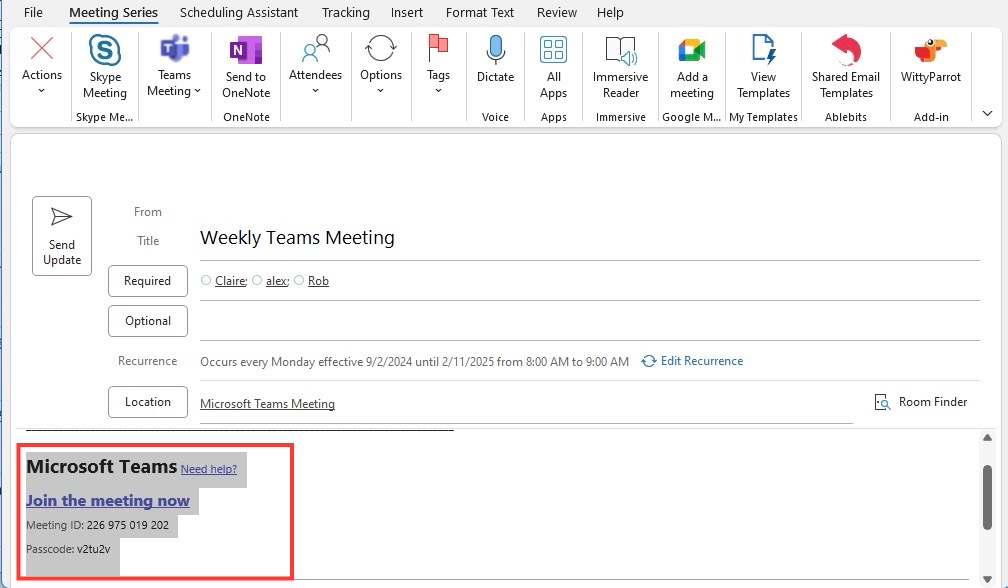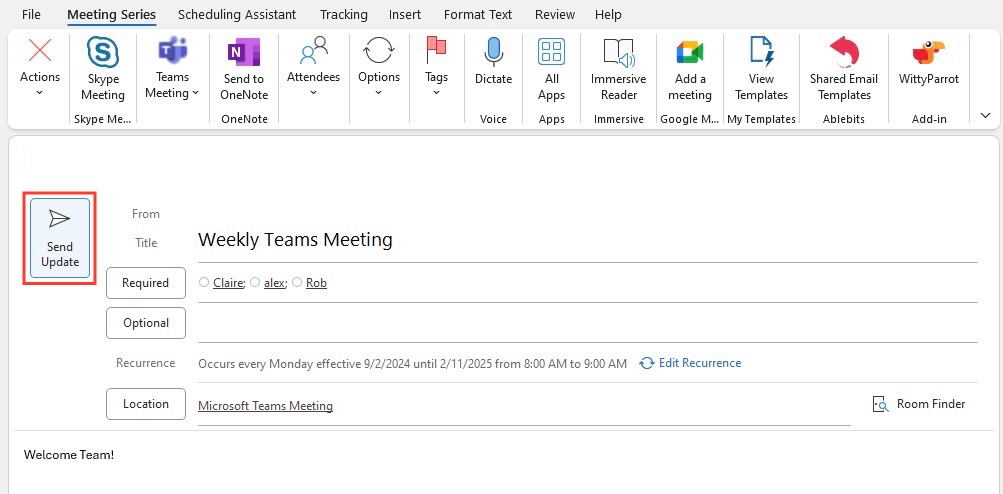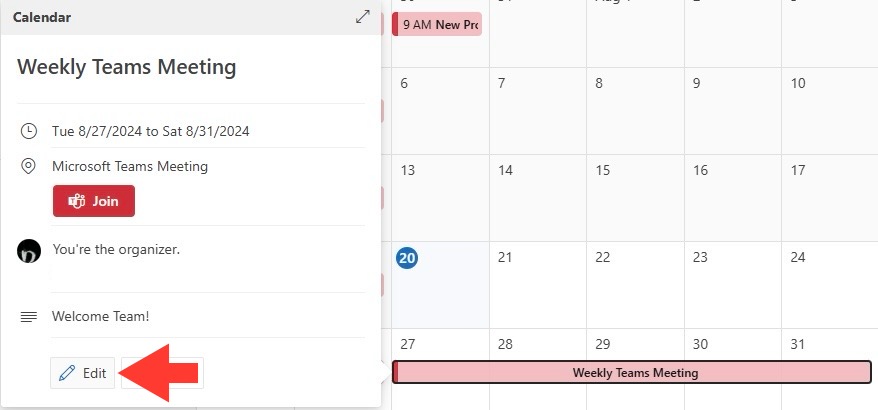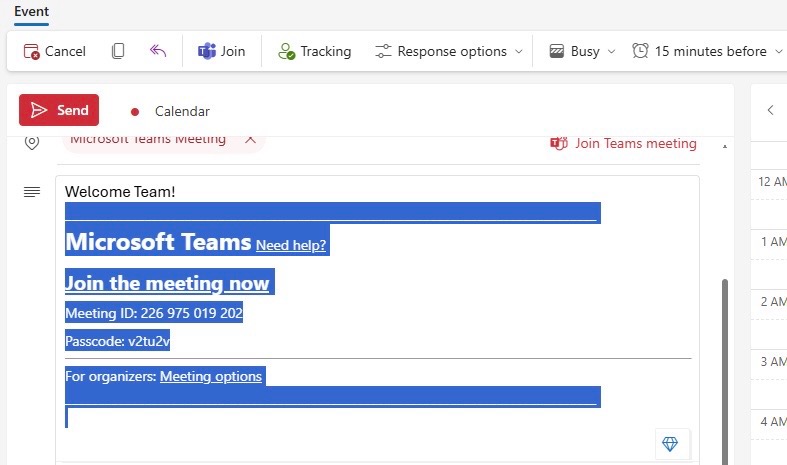I’ve noticed how the integration of Microsoft Teams within Outlook has streamlined the way we manage our meetings. Popping up Teams meeting links within Outlook invites, by default, saves time, especially when we’re coordinating within a Microsoft-centric environment. This synergy is often hailed for its simplicity in creating a digital meeting space instantly.
Key Takeaways
- To remove Teams meeting links from Outlook meeting invites, navigate to the Calendar settings in Outlook, choose ‘Events and Invitations,’ and uncheck ‘Add online meeting to all meetings’, and save the changes.
- To delete a Teams link from a specific meeting, open the meeting invite in Outlook, click on the ‘Teams Meeting’ option within the event, and delete the Teams meeting information, then ‘Save & Close’ and ‘Send Update’ to attendees.
- Remember that Teams links cannot be removed using the Teams app; any changes to meeting invitations, including removing Teams links, must be done within Outlook itself.
Reasons for Removing Teams Meeting Links
Occasionally, we find ourselves in situations where a Teams meeting link isn’t necessary. Maybe we’re planning a face-to-face session, or perhaps the meeting is with external clients who use different conferencing software. Respecting attendee preference or ensuring compatibility across platforms is critical. Additionally, removing a Teams link can prevent confusion if multiple conferencing options are present or if the meeting is meant to be a simple calendar placeholder without any digital joining required.
Table of Contents
Step-by-Step Instructions to Remove Teams Meeting Links
Through the Outlook Desktop Client
When I want to remove a Teams meeting link from an Outlook calendar invite while using the desktop app, I follow a few straightforward steps:
STEP 1: Start by opening the meeting invite that you need to edit.
STEP 2: Scroll through the invite to find the Teams meeting details, typically located below the main body of the invitation text.
STEP 3: Select the Teams meeting link and any associated dial-in information by highlighting them.
STEP 4: Press the delete key to remove the highlighted Teams meeting information.
STEP 5: Once the changes are made, hit the ‘Send Update’ button.
The update is automatically sent to all attendees, notifying them that the meeting will no longer be held on Teams.
Using the Outlook Web App
Switching gears to the Outlook Web App, the process to remove Teams meeting links is similarly user-friendly.
STEP 1: Begin by logging into your account.
STEP 2: From the calendar view, locate and select the meeting in question.
STEP 3: Click the ‘Edit’ button to access the meeting details.
STEP 4: Scroll down to find the Teams meeting link and any accompanying details.
STEP 5: Press backspace or delete to remove the Teams meeting information from the content.
After removing the details, make sure to save your changes.
To keep participants informed, resend the invite so they have the updated meeting information.
Considerations for Different Platforms
Removing Links on Windows vs. MacOS
For those of us who use Microsoft Outlook across different operating systems, it’s important to note there are some nuances. On Windows, the steps to remove a Teams meeting link might involve more access through the ‘File’ and ‘Options’ tabs, while on a Mac, preferences are more directly accessible through the Outlook menu on the top toolbar. This difference in navigation requires us to be slightly adaptable depending on the system we’re using, but the end goal of link removal remains the same.
Handling Teams Meetings on Mobile Apps
On the mobile front, dealing with Teams meetings in the Outlook app calls for a slightly different approach due to the touchscreen interface and app’s design. To remove a Teams meeting link on a mobile device, the process starts with opening the Outlook app and navigating to the Calendar tab. Once there, I tap the event to reveal the details, which usually opens in a modal or full-screen layout. Here, I can edit the meeting and manually delete the Teams link in the invite body. It’s key to be precise with my taps, as the smaller screen can be less forgiving than the spacious layout of a desktop.
Automation and Its Pitfalls
Why Does Outlook Add Teams Meeting Links Automatically?
We’ve likely all been puzzled at some point by Outlook’s eagerness to include Teams meeting links automatically. It’s designed with the assumption that online meetings have become a norm, aiming to provide convenience by embedding a link in every meeting set up. The feature anticipates that a digital space for the meeting is as essential as the meeting itself. However, this presumes every meeting will need a Teams space, where in reality, we may require alternative platforms or none at all.
Disabling Automatic Teams Meeting Link Addition
One key trick I’ve learned is how to disable the automatic injection of Teams meeting links into every invite. To turn off this feature in the Outlook desktop client, I go to ‘File’, then select ‘Options’. In the ‘Outlook Options’ dialog box, under ‘Calendar’, there’s typically an option to disable the auto-addition of Teams meetings. For the web app, the journey takes me into the ‘Settings’ gear icon, then under ‘View all Outlook settings’, I locate the ‘Calendar’ and ‘Events and invitations’ sections to tweak the defaults. Once I uncheck the corresponding box for Teams meetings, my invites will remain clear of automatic links.
Tips for Future Meeting Invitations
Setting Preferences for Teams and Zoom
For those of us embracing both Teams and Zoom, setting up a preference becomes essential. We can specify which service to use directly within Outlook’s settings after installing the necessary add-ins. In my case, once I have the Zoom add-in installed, I ensure I’m signed in to it; this way, I have the flexibility to choose Zoom for my meetings when I create an invite. If I prefer Zoom as my default, I make sure to deselect the option that automatically adds a Teams meeting to calendar invites. I find this tailored approach allows for seamless scheduling with the preferred conferencing tool.
Best Practices for Managing Calendar Invites
I’ve always maintained that clarity and precision are the hallmarks of effective calendar invites. A best practice I adhere to is to include all necessary details in the invite itself—from the purpose of the meeting to agenda points, and of course, the correct meeting link if it’s required. I also double-check attendee lists to avoid sending unnecessary updates or changes. And importantly, I stay vigilant about time zones, an often overlooked, yet crucial detail that can make or break attendance. Adopting these habits ensures my meetings are productive and respectful of everyone’s time.
FAQs
How do you remove Teams link from meeting invite?
To remove a Teams link from a meeting invite in Outlook, go to your Calendar, open the meeting, and simply delete the Teams meeting information from the invite’s body or toggle off the “Teams meeting” label before sending out the updated invite. Make sure to re-send the invite so the attendees receive the updated information.
Can I Restore a Teams Meeting Link Once Removed from an Outlook Invite?
Yes, if you’ve removed a Teams meeting link from an Outlook invite and need to restore it, simply open the meeting in Outlook, click on ‘Teams Meeting’ to generate a new link, and resend the invite to update the attendees.
Will Removing the Teams Meeting Link Affect the Outlook Calendar Entry?
No, removing the Teams meeting link from an invite will not affect the time, date, or other details of the Outlook Calendar entry—it only removes the option for attendees to join the meeting via Teams link.
John Michaloudis is a former accountant and finance analyst at General Electric, a Microsoft MVP since 2020, an Amazon #1 bestselling author of 4 Microsoft Excel books and teacher of Microsoft Excel & Office over at his flagship MyExcelOnline Academy Online Course.











